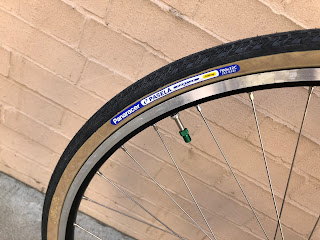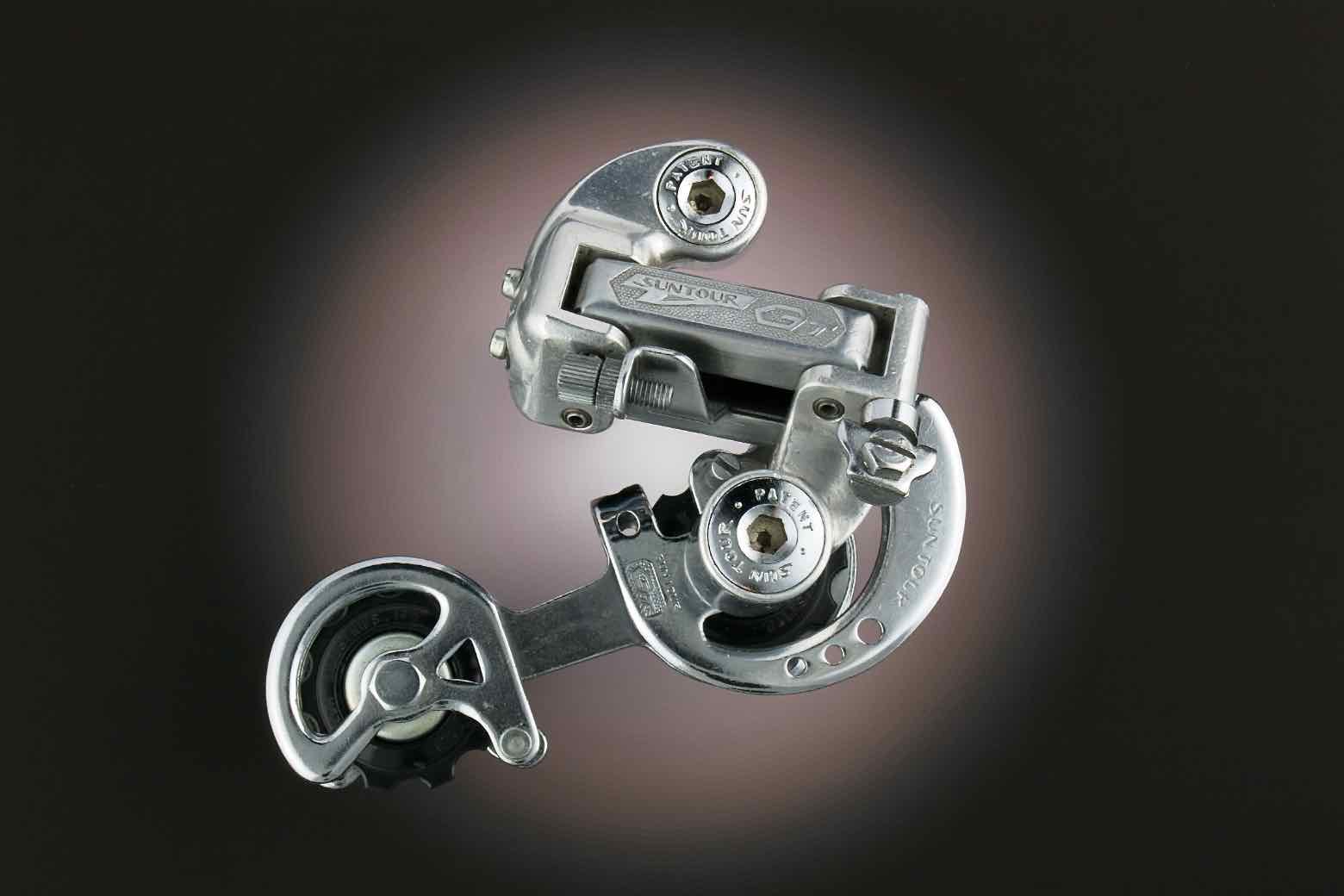Once upon a time, a "dream" bike would be outfitted with Campagnolo Nuovo or Super Record components. I finally did get my dream after a few years of riding, a bunch of part-time jobs on the side and a few skipped meals.
In those days, Campagnolo didn't make rims. At least, no hoops bore the Campy's logo. (I have heard, from various sources, that the rims Campagnolo would offer later were actually made by FIR.) So, you chose from a number of other manufacturers. Super Champion of France was popular in the day; in fact, my first "nice" wheels bore their rims. So were Rigida, Nisi, Fiamme and Weinmann. But most of us agreed that the "name" brand for rims was Mavic. I rode their jantes on my first all-Campy bike--and most of the bikes I've ridden since.
During the '80's and '90's, Mavic was a veritable juggernaut in the world of rims and wheels, much as Shimano was (and, arguably, still is) among other bicycle componentry. They produced the best tubulars and developed the first lightweight clincher that, combined with Michelin's Elan tire, could rival the weight and performance of tubulars. A decade or so later, they developed some of the first really good rims for the then-nascent sport of mountain biking.
To this day, Mavic is best-known for its rims and wheels. But it also produced some really nice componentry. Its 451 brakes are believed, by some, to be the finest single-pivot sidepulls ever made. (Actually, Dia Compe made them for Mavic, who designed them.) They are certainly among the most beautiful. And, interestingly enough, Mavic's first products in 1889 were mudguards (fenders to us Yanks).
Mavic has contributed to the world of cycling, not only through its technical innovations and quality manufacturing, but also through its support of various teams throughout the years--and its neutral technical support of the Tour de France. Their support cars and bikes are yellow, like the comany's label--and the Tour de France leader's jersey.
Sadly, however, reports from Agence-Presse France say that Mavic has been placed into receivership by a commercial court in Grenoble, near the company's Annecy, France, base. "Receivership" is initiated by creditors or banks that believe a company cannot pay its debts. This differs from "administration," which can be initiated by a company's directors. The result of "receivership" is that the company is taken over by a court-appointed "reciever" who controls the assets and tries to keep the company out of liquidation.
As much as I like Mavic's rims and some of their other stuff, I'll admit that if I were more of a weight weenie, I'll admit that they're no longer the "go-to" they were, say, twenty or even ten years ago. Some of that drop in prestige has to do with other companies making stuff that's lighter or just sexier. So, it's not a surprise that Mavic's sales have not kept pace in recent years.
The real problem for Mavic, though, seems to be that nobody seems to know who actually knows it. Solomon, best known for ski equipment, bought Mavic in the mid-90's; a few years later, Adidas bought Solomon. Amer Sport, a Finnish group, would later become the main shareholder of Mavic. Amer removed Mavic from its accounts in 2018 and sold the company to Regent LP, a California investment fund, last July.
So, the employees of Mavic, who are unionized, believed that their company was in the hands of Regent. But, for some reason, they were not informed that the sale didn't go through and Mavic was instead acquired by a Delaware-based entity called M Sports International LLC, which has no links to Regent--and practically no traces on the Internet.
This sounds like the makings of a mystery novel. The thing about novels (and plays) is that if they're great to read or watch, you should be happy that you don't have to live them. The employees of Mavic want to know what their future is. So do many of us who use their products.
In those days, Campagnolo didn't make rims. At least, no hoops bore the Campy's logo. (I have heard, from various sources, that the rims Campagnolo would offer later were actually made by FIR.) So, you chose from a number of other manufacturers. Super Champion of France was popular in the day; in fact, my first "nice" wheels bore their rims. So were Rigida, Nisi, Fiamme and Weinmann. But most of us agreed that the "name" brand for rims was Mavic. I rode their jantes on my first all-Campy bike--and most of the bikes I've ridden since.
During the '80's and '90's, Mavic was a veritable juggernaut in the world of rims and wheels, much as Shimano was (and, arguably, still is) among other bicycle componentry. They produced the best tubulars and developed the first lightweight clincher that, combined with Michelin's Elan tire, could rival the weight and performance of tubulars. A decade or so later, they developed some of the first really good rims for the then-nascent sport of mountain biking.
To this day, Mavic is best-known for its rims and wheels. But it also produced some really nice componentry. Its 451 brakes are believed, by some, to be the finest single-pivot sidepulls ever made. (Actually, Dia Compe made them for Mavic, who designed them.) They are certainly among the most beautiful. And, interestingly enough, Mavic's first products in 1889 were mudguards (fenders to us Yanks).
Mavic has contributed to the world of cycling, not only through its technical innovations and quality manufacturing, but also through its support of various teams throughout the years--and its neutral technical support of the Tour de France. Their support cars and bikes are yellow, like the comany's label--and the Tour de France leader's jersey.
Sadly, however, reports from Agence-Presse France say that Mavic has been placed into receivership by a commercial court in Grenoble, near the company's Annecy, France, base. "Receivership" is initiated by creditors or banks that believe a company cannot pay its debts. This differs from "administration," which can be initiated by a company's directors. The result of "receivership" is that the company is taken over by a court-appointed "reciever" who controls the assets and tries to keep the company out of liquidation.
As much as I like Mavic's rims and some of their other stuff, I'll admit that if I were more of a weight weenie, I'll admit that they're no longer the "go-to" they were, say, twenty or even ten years ago. Some of that drop in prestige has to do with other companies making stuff that's lighter or just sexier. So, it's not a surprise that Mavic's sales have not kept pace in recent years.
The real problem for Mavic, though, seems to be that nobody seems to know who actually knows it. Solomon, best known for ski equipment, bought Mavic in the mid-90's; a few years later, Adidas bought Solomon. Amer Sport, a Finnish group, would later become the main shareholder of Mavic. Amer removed Mavic from its accounts in 2018 and sold the company to Regent LP, a California investment fund, last July.
So, the employees of Mavic, who are unionized, believed that their company was in the hands of Regent. But, for some reason, they were not informed that the sale didn't go through and Mavic was instead acquired by a Delaware-based entity called M Sports International LLC, which has no links to Regent--and practically no traces on the Internet.
This sounds like the makings of a mystery novel. The thing about novels (and plays) is that if they're great to read or watch, you should be happy that you don't have to live them. The employees of Mavic want to know what their future is. So do many of us who use their products.


















